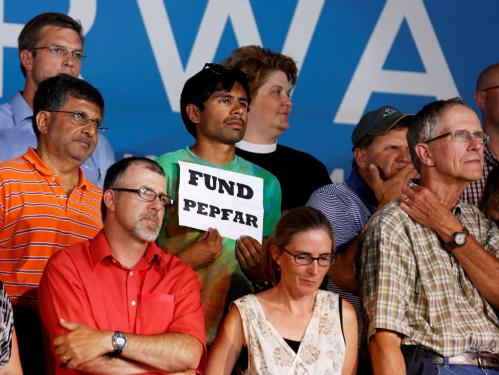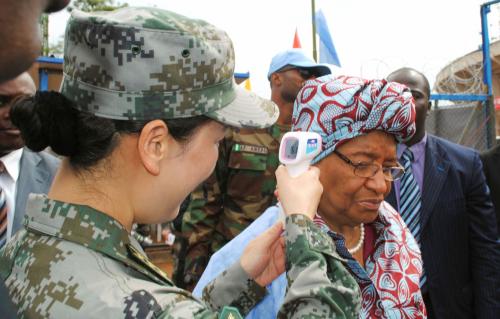Rural health care in India faces a crisis unmatched by any other sector of the economy. To mention just one dramatic fact, rural medical practitioners (RMPs), who provide 80% of outpatient care, have no formal qualifications for it. They sometimes lack even a high school diploma.
In 2005, the central government launched the National Rural Health Mission (NRHM) under which it proposed to increase public expenditure on health as a proportion of the GDP to 3% from 1%. But increased expenditure without appropriate policy reform is unlikely to suffice. Experience to-date inspires little confidence in the ability of the government to turn the expenditures into effective service.
Rural India consists of approximately 638,000 villages inhabited by more than 740 million individuals. A network of government-owned and -operated sub-centres, primary health centres (PHCs) and community health centres (CHCs) is designed to deliver primary health care to rural folks.
Sub-centre is the first contact point between the community and the primary health care system. It employs one male and one female health worker, with the latter being an auxiliary nurse midwife (ANM). It is responsible for tasks relating to maternal and child health, nutrition, immunisation, diarrhoea control and communicable diseases.
Current norms require one sub-centre per 5,000 persons, one PHC per 30,000 people and one CHC per 120,000 people in the plains. Smaller populations qualify for each of these centres in the tribal and hilly areas. Each PHC serves as a referral unit to six sub-centres and each CHC to four PHCs. A PHC has four to six beds and performs curative, preventive and family welfare services.
Each CHC has four specialists — one each of physician, surgeon, gynaecologist and paediatrician — supported by 21 paramedical and other staff members. It has 30 indoor beds, one operation theatre, X-ray and labour rooms and laboratory facilities. It provides emergency obstetrics care and specialist consultation.
Despite this elaborate network of facilities, only 20% of those seeking outpatient services and 45% of those seeking indoor treatment avail of public services. While the dilapidated state of infrastructure and poor supply of drugs and equipment are partly to blame, the primary culprit is the rampant employee absenteeism. Nation-wide average absentee rate is 40%.
The employees are paid by the state, with the local officials having no authority over them. Not surprisingly, many medical officers visit the PHCs infrequently and run parallel private practice in the nearby town. ANMs are frequently unavailable for childbirths even if the mother is willing to come to the PHC. Though PHCs are supposed to be free, most of them informally charge a fee. Under these circumstances, even many among the poor have concluded in favour of private services.
Sadly, public health services have done poorly even along the income distribution dimension. According to a 2001 study, the poorest 20% of the population captures only 10% of the public health subsidy compared with 30% by the richest 20%. The share in the subsidy rises monotonically as we move from the bottom 20%. The justification for the government provision of health services on income distribution grounds does not find support in the data.
To make improvements in the delivery of health services, at least three reforms are urgently required. First, it is time to accept the fact that the government has at best limited capability to deliver health services and that a radical shift in strategy that gives the poor greater opportunity to choose between private and public providers is needed.
This can be best accomplished by providing the poor cash transfers for out-patient care and insurance for in-patient care. Once this is done, a competitive price must be charged for services provided at public facilities as well. The government should invest in public facilities only in hard to reach regions where private providers may not emerge.
Second, the government must introduce up to one-year long training courses for practitioners engaged in treating routine illnesses. This would be in line with the National Health Policy 2002, which envisages a role for paramedics along the lines of nurse practitioners in the United States.
The existing RMPs may be given priority in the provision of such training with the goal being replacement of all RMPs by qualified nurse practitioners.
Finally, there is urgent need for accelerating the growth of MBBS graduates to replace unqualified “doctors” who operate in both urban and rural areas. Taking into account the evolution of medical colleges and assuming that doctors remain active for 30 years after receiving their degrees, there are at the most 650,000 doctors in India today.
With a population of 1.1 billion, this implies approximately 1,700 people per doctor. In comparison, there are just 400 people per doctor in the United States and 220 in Israel. Whereas private colleges and institutes in engineering, computer applications and business fields have mushroomed in response to the demand, the same has not happened in the medical field.
The Indian Medical Council (IMC) zealously controls the entry of new colleges and keeps the existing medical colleges on a short leash. Recently, it threatened to effectively close down as many as six of the eight medical colleges in Bihar because they were in violation of its guidelines on how many senior positions could be left unfilled at any time.
Given low salaries, colleges face serious difficulties in filling the positions. The result has been extremely slow expansion of capacity in many states. West Bengal has added just two medical colleges since 1969, Rajasthan three since 1965, Punjab three since 1973, Delhi one since 1971 and Bihar two since 1971.
Only Andhra Pradesh, Karnataka, Maharashtra and Tamil Nadu have achieved satisfactory progress. This must change. The IMC perhaps needs to relax its norms and the government needs to make salaries competitive to adequately staff the existing colleges and open new ones.
The Brookings Institution is committed to quality, independence, and impact.
We are supported by a diverse array of funders. In line with our values and policies, each Brookings publication represents the sole views of its author(s).



Commentary
Op-edIndia: The Crisis in Rural Health Care
January 24, 2008